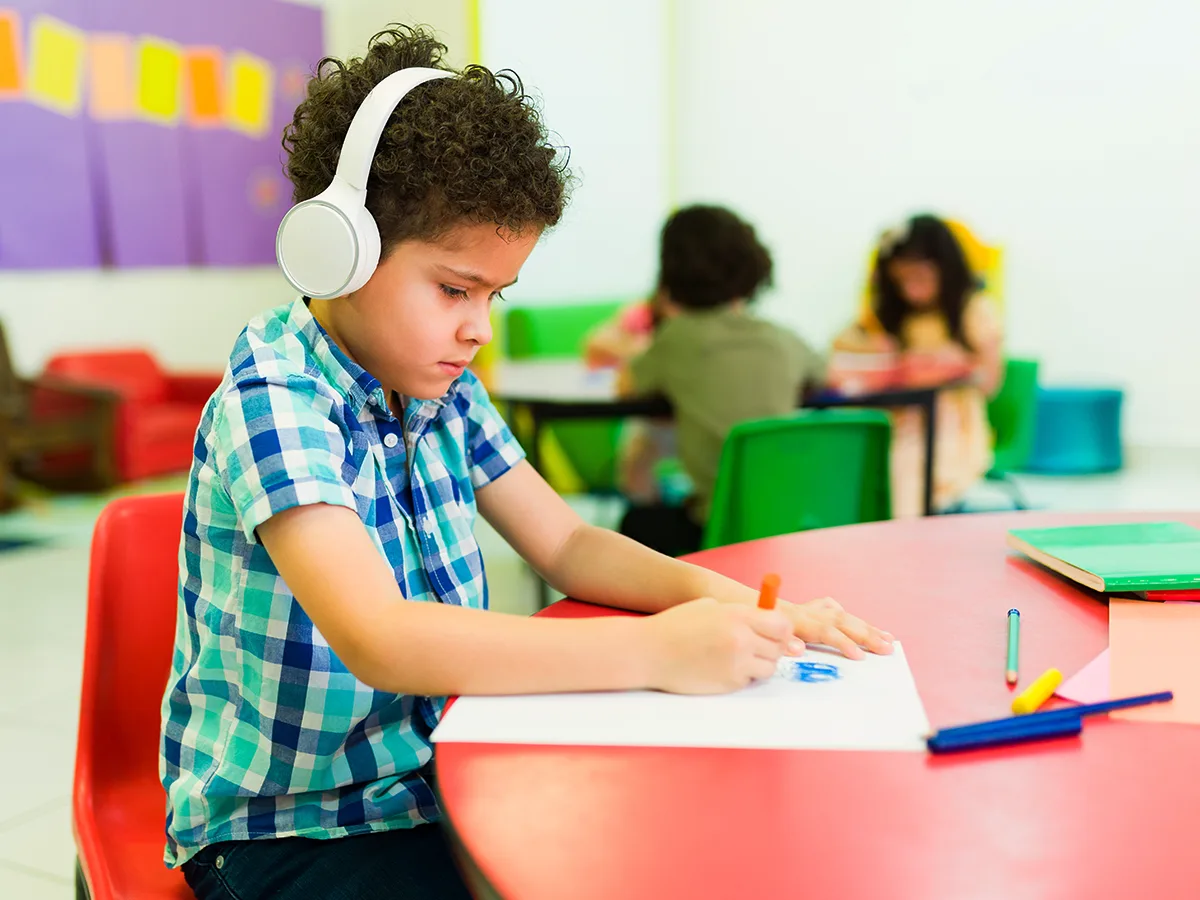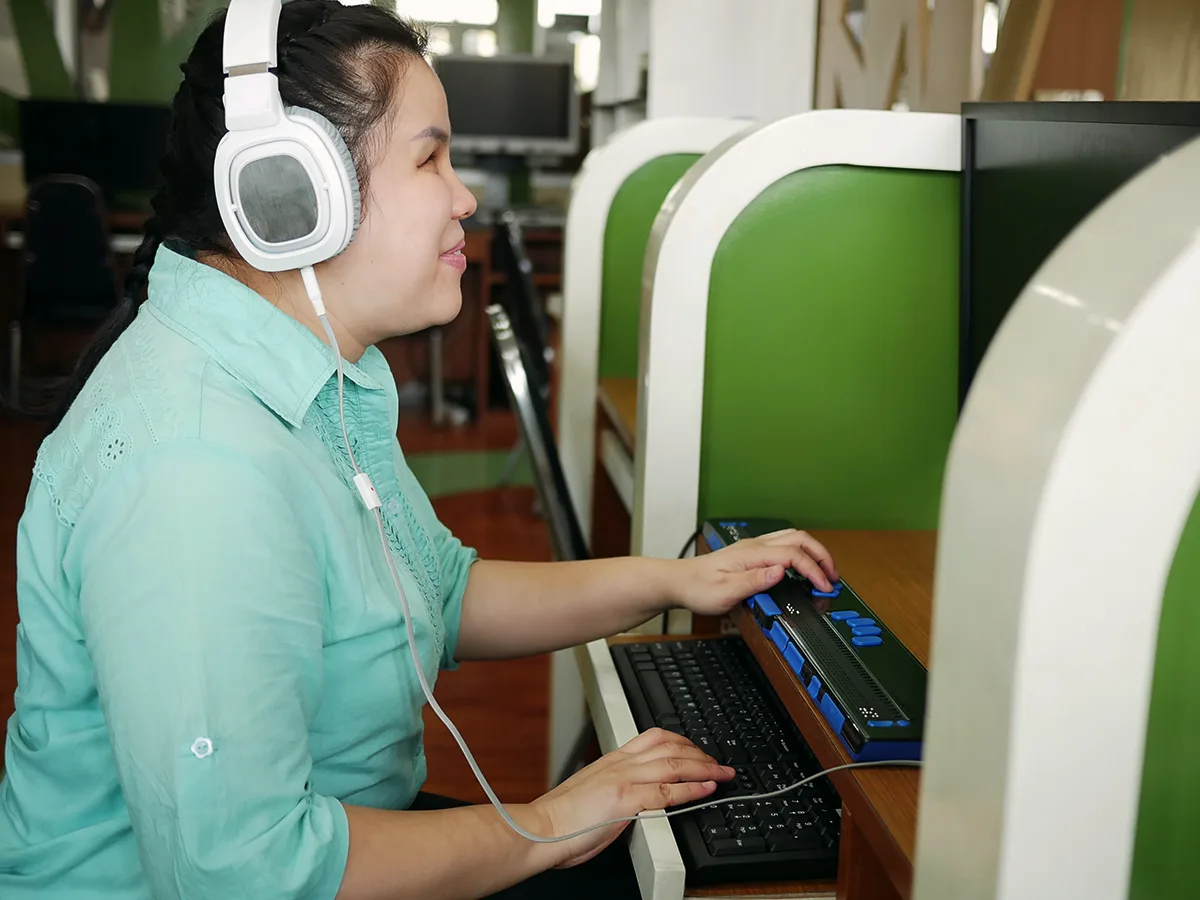Assistive technology for auditory processing challenges

At a glance
Assistive technology (AT) can help kids with auditory processing challenges better understand what they hear.
AT tools include listening devices, captions, and text-to-speech apps.
AT tools can minimize background noise and amplify speech to make it clearer.
Auditory processing challenges isn’t an actual diagnosis. But the struggles it refers to are very real. People with these challenges don’t recognize the small differences in the sounds of words. So, they may mishear questions or have trouble following instructions. They may also be easily distracted by background noise. But assistive technology (AT) can be a big help.
Here’s a guide to AT tools and where to find them.
Types of AT for auditory processing challenges
There’s a range of AT tools for auditory processing challenges. They address different areas of difficulty.
Personal listening devices (PLDs). These tools can help people hear voices more clearly. People who are speaking, like teachers or managers, wear a clip-on microphone. The mic transmits their voices to an earpiece or personal speaker used by the person with the challenges.
Some PLDs are called frequency modulation (FM) listening systems. That’s because they rely on the same FM frequencies radio stations use. Some newer PLDs use Wi-Fi or Bluetooth to transmit a voice. Apps are also available that allow an iPhone or iPad to work as a PLD.
Sound field systems. These are specialized speaker systems for classrooms or meeting rooms, which often have sound issues. There may be areas where sound echoes or is muffled. These systems broadcast speakers’ voices to speakers placed in certain locations in the room.
This helps to distribute their voice evenly throughout the room, so everyone can hear it well. Systems may include a pass-around microphone for people to use during discussions. Sound field systems can be installed permanently. Others are portable and can be moved to different rooms.
Noise-canceling headphones. These tools can help block out background noise for people who are sensitive to sound. Some people may find it helpful to connect their headphones to a white noise app that plays sounds like rain or static. Some people use them when they need to listen to audio (for example, text-to-speech from their device). They can listen through the headphones to help filter out distracting background noises.
Audio recorders. These allow people to record lectures or discussions. Later, they can listen (several times, if they want to) if they didn’t understand or missed things the first time. Users are also able to pause the recording or play it at a slower speed to improve understanding.
Some note-taking apps and devices allow people to synchronize their handwritten or typed notes to the audio recording. This can make it easier to navigate an audio recording. The user can simply tap on a note later to hear what was recorded at that time.
Captioning. This tool allows people to read text that matches what’s being said. This can make it easier to understand spoken language. A classic example is closed captioning on television and movies.
Auto-captioning is available with a number of platforms and apps. You can turn it on during Zoom meetings and PowerPoint presentations. It’s also available in YouTube videos. Just know that it may not be completely accurate. That’s because it uses speech recognition software.
Newer voices for text-to-speech (TTS) software. TTS software lets people see text and hear it read aloud at the same time. The text is spoken by a computer-synthesized voice. This may help people who struggle with reading skills. But certain voices may be hard to understand for people with auditory processing challenges.
It can take some experimenting with different voices and reading speeds to find what works. And some of the newer TTS voices (often called “neural text-to-speech”) are very human-sounding. Another option is audiobooks. They use human voices for narration.
Where to get AT for auditory processing challenges
Some AT tools are easy to find. Audio recorders and headphones are sold at electronics stores and online. Many tools are available on a range of platforms. These include mobile devices, computers, and Chromebooks. Some tools are already built in. Note-taking tools that link recorded audio with notes can be bought and downloaded to the user’s device.
Captioning is available for free on most TV programs, movies, and remote meeting apps like Zoom. The same is true for most websites that have videos. But you may need to contact a specialized company for devices like a sound field system or a personal listening device. If you’re looking for AT for your child, you can ask if their school will provide these tools.
saLearn more about auditory processing challenges. And explore classroom accommodations to help with auditory processing.
Key takeaways
AT tools can help people cope with listening challenges in the classroom and the workplace.
Certain systems can transmit the speaker’s voice directly to listeners.
Some AT tools can be found at electronics stores or downloaded online.





